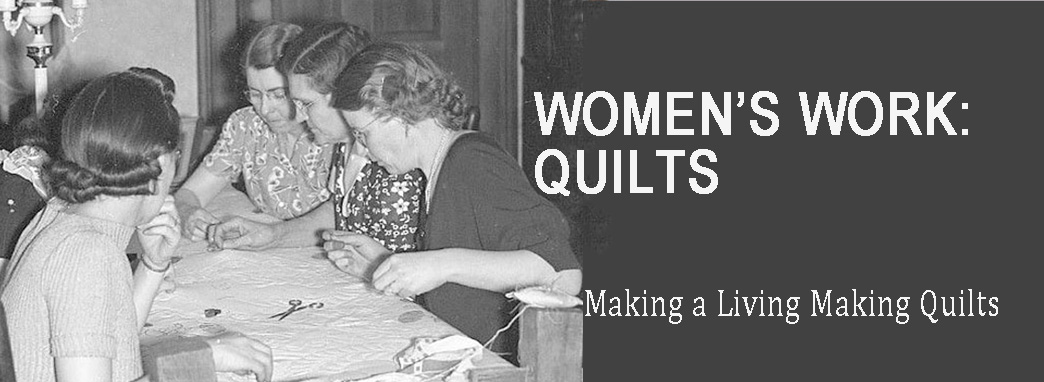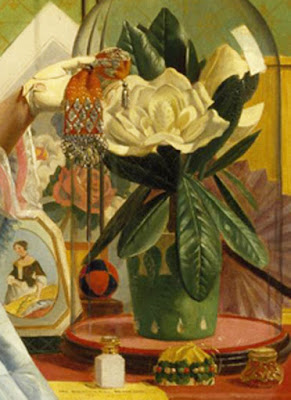Advertising card from a Philadelphia shop for fancy goods
operated by Mrs. George M. Baker.
Mrs. Baker seems to have sold paper goods.
A few weeks ago I wrote about a Fancy Repository in London in the 1850s. There must have been women like Emma Wilcockson in the United States who ran needlework shops with sewing supplies and patterns for fancywork. But the words Fancy Repository seem to mean nothing on this side of the Atlantic.
What would such a shop have been called? I read the 1837 Philadelphia city directory looking for clues. I found many references to "Fancy Stores" and "Fancy Goods," about half of them linked to men and half to women.
"Fancy store" could refer to anything however. Fancy was a popular concept in the early 19th century. The Library Company of Philadelphia has many photos of mid-19th century businesses. The G.A. Schwarz Toy & Fancy Emporium (Wholesale & Retail) sold statuary, ceramics, toys---fancy stuff.
Fancy Goods & Novelties---again toys.
Photo by Frederick DeBurgh Richards
Library Company of Philadelphia
Fouth Street & Chestnut, commercial neighborhood where many
of the Philadelphia fancy shops were located
Women would have been more likely to have run shops that sold needlework so I picked out the woman-run businesses in Philadelphia.
Here is the list:
Amanda Pitcher Fancy Goods 67 Cedar
Eliza Gaffney fancy goods 148 S 11th
Mary Hoguet fancy goods 80 s 4th
Mrs S Hart & Son fancy goods 120 Chestnut
Hart & Brother, fancy goods 32 S 6th, h 120 Chestnut
Mrs. E Dean fancy goods NE 11th & Chestnut
Mary Fargundus fancy store 341 S 4th
Louisa Grant fancy goods 4 Arcade
Mary Laycock, fancy goods 59 Chestnut
Ann McGuigan fancy store 146 S 11th
Eunice A Taylor fancy store 151 Walnut
Corner of 2nd and South Streets
I chose one woman with an unusual name to see if I could find more about her and her goods. Mary Collins Hoguet was an American who married a French refugee. She was born January 15, 1797 in Philadelphia. Her husband Auguste François Hoguet was 25 years older, born in Paris on August 1, 1771 before the French Revolution of 1789.
Hoguet clock labeled "Hoguet Le Jeune"
[Hoguet the younger]
who may have been Auguste's father.
His family were clockmakers, tradesmen to the aristocracy. France's ever changing politics dictated Auguste's emigration to Philadelphia some time after the birth of his last French child with wife Louise Angeligue LeProvost in 1810 (she lived until 1864 long after his marriage to Mary.)
Auguste François Hoguet
Mary was his third wife
Mary Collins Hoguet's first child Augustus was born (and died) in 1817 so it's thought they were married about 1816 when she was about 20. Auguste was a jeweler and clockmaker in Philadelphia. He became an American citizen in 1821. Their six surviving children were born between 1818 and 1829.
Photograph of a Chestnut Street clock shop (at right) in 1843 by W. Mason,
Library Company of Philadelphia
Shop owners usually lived above the first floor store.
Hoguet financial affairs were obviously in disarray by 1837 when we find Mary operating her fancy goods store. Were Auguste (now aged 66) supporting her and their six children she would not have been working. The year 1837 was the beginning of a nationwide financial crisis known as the Panic of 1837 so the Hoguets (living together or apart) were certainly not alone in their distress. The directory does not list Auguste.
Mary's shop is also listed in the directory for 1839 so she must have had some success to persist in a difficult time. Auguste is back in Paris in 1845, perhaps divorced from Mary, says his biography. The 1860 city directory lists Mary Hoguet as the widow of Augustus F., living at 110 Jacoby. Son Francis is in the furniture business. He served as a First Lieutenant with the 110th Pennsylvania Infantry during the Civil War. Son Louis was a successful druggist in Bucks County and Joseph a boiler maker in Philadelphia according to the 1863 directory. Her sons must have contributed to Mary's support as that directory lists her as a "gentlewoman" living at 1212 Buttonwood.
Chestnut & 4th in the 1890s
She died in Philadelphia on February 10, 1866 at 69. Mary and several of her children are buried in Woodlands Cemetery there with no reference to their French father.
I found little about Mary's business. What I found about her personal life seems to be consistent with what we can assume about women-run businesses. She worked because she had no support from a husband, women's most reliable economic base at the time.
I didn't find any Philadelphia shops that sound like the repositories in London. Philadelphia was not London (as many visitors at the time would be glad to tell you) and it just may be that Philadelphians could not support such specialty stores. There must have been a demand for patterns and supplies but perhaps one bought them in general stores or dry goods shops or from women who operated business from their homes.
Fancy goods is an awfully broad category.
Here it refers to glassware and china.
Mary Collins Hoguet's Find-A-Grave file:




























